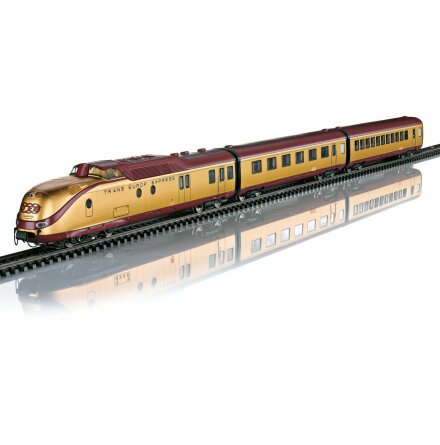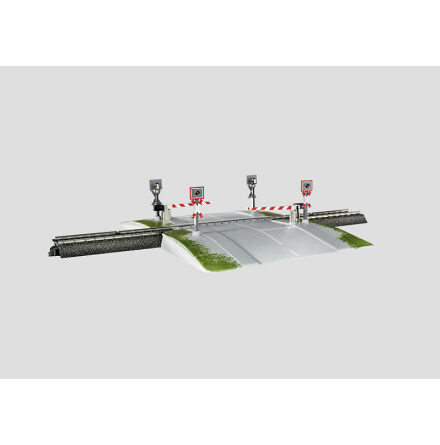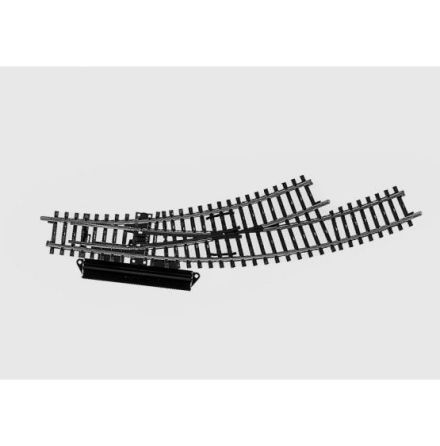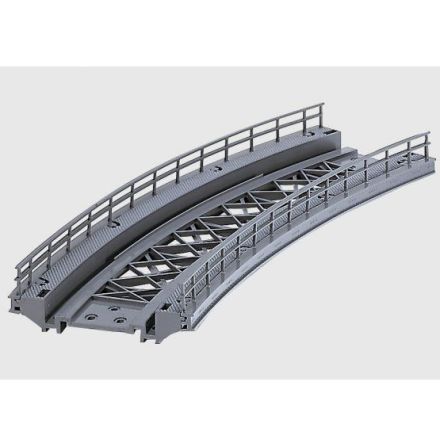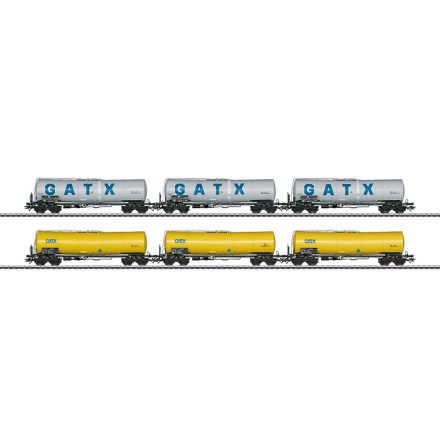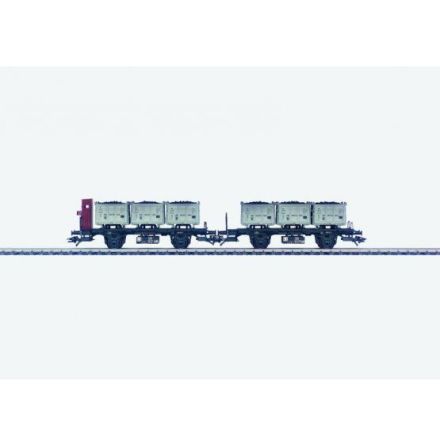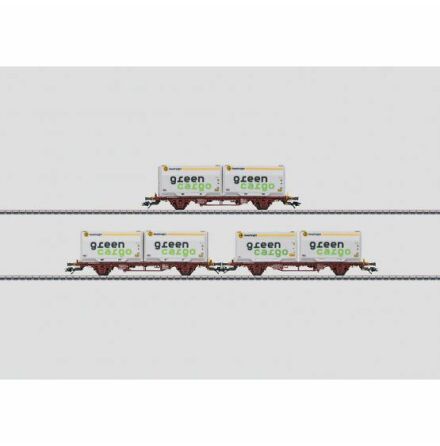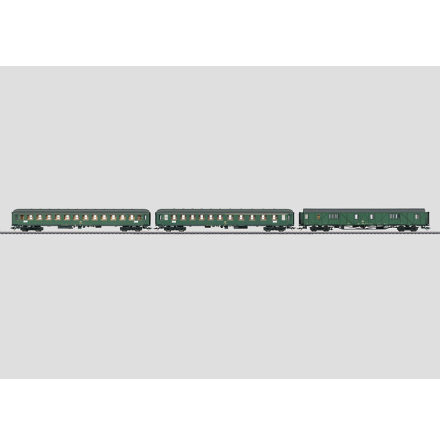Beskrivning
Gauge: H0 Era: III
Prototype: 5 different German Federal Railroad (DB). 1 type WRPw4üe end car with a baggage area, machinery room, galley, and dining area, 3 type A4üe intermediate cars, 1st class, 1 type A4üe end car, 1st class, with an observation area. The cars are steel blue in color. Used for the "Blauer Enzian" / "Blue Gentian" "F-Zug" express train. Rebuilt cars from the former Henschel-Wegmann train. Used on the train route Munich - Augsburg -Würzburg - Bebra - Hannover - Hamburg Altona. The cars look as they did around 1958.
Model: The minimum radius for operation is 360 mm / 14-3/16". The interiors vary according to the car type. The cars have prototypical changes in the roof area. The end cars have prototypical round buffers instead of the former buffer stumps. All of the cars have factory-installed interior lighting. The interior lighting is done with warm white LEDs. One car comes from the factory equipped with a pickup shoe. Current-conducting coupling drawbars come from the factory already mounted in standard coupler pockets for providing power to all of the cars in the train. The cars have train destination signs and car sequence numbers printed on them.Total length over the buffers 126.5 cm / 49-13/16". DC wheel set per car 4 x 700580.
Highlights:
- Prototypical changes to the cars.
- A correct "Blauer Enzian" train is possible with the 39804 diesel locomotive.
One-time series.
"Blauer Enzian" / "Blue Gentian" F-Zug Long Distance Express The "Blaue Enzian" stood for a type of mystique during the German Economic Miracle period. The precursors to the West German economic miracle made themselves known quite soon after the founding of the German Federal Railroad (DB). And, the DB management recognized early on that the senior managers for the economy would need a reliable transportation network. The worst of the damage from World War II had hardly been cleared, and the railroad prepared a train network as early as 1951 that was planned to connect the important West German urban centers by means of fast trains. The so-called "F-Zug" network had its roots in the express powered rail car network of the pre-war period, but it had an important difference: While the German State Railroad Company (DRG) before World War II had oriented the network of "Flying Trains" to Berlin, the main routes of the F-Zug network in the postwar period ran from North to South due to the "Iron Curtain". Fast train connections were set up between Hamburg, Bremen, the Rhine-Ruhr area and Cologne, Frankfurt (Main), Stuttgart, Nürnberg, Munich, and Basle, trains which ran with just a few stops out in the morning and back in the evening. The idea was that it should be possible to do an outside business appointment in one day. Of course, this did not work for great distances such as Hamburg - Munich. Borrowing from the "FD" in use before the war, the train class was now called "F-Züge", where the "F" stood for "Long Distance". An "F" surcharge had to be paid in addition to the regular ticket price. The train routes were given euphonious names starting in 1953: The train pair F 55/56 (Hamburg – Munich – Hamburg) was the first and was given the name "Blauer Enzian". With "Gambrinus", "Helvetia", "Senator", "Roland", and "Domspatz" – to mention just a few – the "F-Züge" or "Long Distance Trains" bore additional melodious names and became the pride of the new German Federal Railroad. The name "Blauer Enzian" did not have its roots in the famous song of a German hit singer; that came much later. The "Blauer Enzian" was more the result of a contest organized among the passengers, who voted for the alpine flower. It's possible that the passengers associated the paint scheme and the train's destination near the Alps with the rare bright, pure blue color of the flower. The "Blaue Enzian" was an exception among the "F" trains due to its cars, because from December of 1953 on it was upgraded through the use of the car set for the former Henschel-Wegmann train. The Henschel-Wegmann train ran between Berlin and Dresden before World War II starting with the summer schedule of 1936. It served the barely 180 kilometer / 113 mile route with two pairs of trains daily. The fastest run for this distance required 1 hour and 35 minutes. This made the Henschel-Wegmann train a good half hour faster than all of the previous trains. Even today there is no comparable offering by far; the fastest connection between Berlin and Dresden adds up to a good two hours and 15 minutes. In 1946, this set of cars was standing totally plundered and no longer usable in Hamburg- Langenfelde. In 1952, the DB had it brought back to the builder, Wegmann, in Cassel, where the five cars were completely overhauled, updated, and painted in the blue of the "F" trains. The design of the cars remained largely unchanged. The trucks however were equipped with a fourth spring and the basic plan as well as the interior features was adapted to the new requirements of the "F" train service. The train offered an elegant view in its steel blue and silver paint scheme with black skirting. After the DB had presented this rebuilt train to the public at the German Transportation Exhibition in Munich from June to November of 1953, it was in service for 5 years starting in December of 1953 as long distance train F 55/56 "Blauer Enzian" between Hamburg and Munich with intermediate stops in Hannover, Göttingen, Fulda, Würzburg, Treuchtlingen, and Augsburg. Starting at the end of 1956 / beginning of 1957 the steam motive power in use until then north of Würzburg gave way to diesel power with the new class V 200.0. South of Würzburg older class E 17 and E 18 electric locomotives were used until the new class E 10 electrics entered service. In 1959, the German Federal Railroad took the Henschel-Wegmann train out of service and stored it at the maintenance facility in Neuaubing. It was scrapped there in 1962 after it was finally retired.
The classic "Blauer Enzian" / "Blue Gentian" express train can be reproduced prototypically with the 42610 express train passenger car set and the 39804 diesel locomotive.
This car set can be found in a DC version in the Trix H0 assortment under item no. 23373.





